Willem Dooijewaard (1892-1980) ‘The cockerel fighter’, signed l.l., canvas. 85 x 55 cm. Executed ca. 1932. Literature reference: Dhaimeler, D.H., W. Dooijewaard, a Dutch artist in Indonesia, Jakarta 1992, compare with an almost identical painting, p. 155; Koenraads, J.P.: De Gebroeders Jacob en Willem Dooijewaard, Hilversum, 1966, compare with an almost identical painting, p. 89. PLEASE NOTE: we don't accept online live bids during the auction for this lot. ‘Dooyewaard did not imagine of this fairytale island any Far Eastern dreams or phantastic depictions. He considered reality to be sufficient, and generously visualized this reality, in vigorously, broadly painted colour gamuts.’ (Theodoor van Lelyveld,Willem Dooyewaard op Bali, in Nederlandsch Indië Oud en Nieuw, November 1936) Over a period of 20 years, between 1912 and 1932, Dooyewaard traveled through Asia. After finishing his studies at the Royal Acadamy of Art in Amsterdam in 1912, he spent 6 years at a rubber plantation in Sumatra, before he left for Bali. It was in Bali where he met and befriended Roland Strasser in 1922. The two artists worked together and traveled together, defying hardships of all kinds, and observing things that were hardly ever observed before by Europeans. Dooyewaard and Strasser managed not only to visit, but also immortalize on paper and canvas the people of China, Mongolia, Japan, India, and Tibet, to name but a few. Bali, however, takes a special place in Dooyewaards body of work. Dooyewaards Balinese oeuvre can be divided into three periods: his stays in 1918-1920, 1921-22 and 1931-1933. Stylistically, these three periods differ quite a bit; In the second period, Dooyewaard was greatly influenced by Roland Strasser In 1931, shortly after marrying Jacoba Reinders in Japan, he enjoys a third stay on Bali, initially intended to be Willem and Jacoba’s honeymoon. During this period, his work developed into the impressionist style that Dooyewaard is best known for. ‘Many of Willem’s Balinese paintings were done during the three happy years they were to spend there. They avoided close contacts with the white population in the island and lived alone amidst luxuriant nature, fully accepted by the kind Balinese people. They understood them and loved their culture and customs, the highly mystical religious dances, the fascinating intense surrender of the dancers to their emotions and the beauty of the strictly traditional movements and figures, full of symbolism.’ (Koenraads, 1966, p. 167) Consequently, Dooyewaards paintings from 1931-1933 depict legong dancers (mostly portrayed full length onto one-meter high canvases), market vendors, landscapes, and cock fighters. The current lot is a typical example of a man holding his cockerel, from this period. It represents all the energy, pride and virility of this ancient blood sport. Fighting cockerels were usually pampered by their owners like prize-winning horses. A majority of Balinese men spent a substantial amount of time with their favorite cockerels, grooming them, feeding them, discussing them, trying them out against each other, or just gazing at them with a mixture of rapt admiration and dreamy selfabsorption. Judging from his intense look, the cockerel fighter we see here, seems as fearless as his prized animal. Dooyewaard is able to capture the impressive sense of distinction, with which the cockerel is presented to the world. There seems no doubt that this man’s beloved creature will emerge victorious from the next battle. The keris on his back makes us wonder where he is from: in the few suggestive brush strokes, Dooyewaard seems to depict an elaborately carved ivory keris hilt from Madura. The red hibiscus (kembang sepatu) in his headdress, however, suggests we are dealing with a Balinese man. Be as it may, his expression of power and determination is unchallengeable. Painting in his matured manner, using spontaneous brush strokes and saturated, earthy colours, and above all, sensing and
Willem Dooijewaard (1892-1980) ‘The cockerel fighter’, signed l.l., canvas. 85 x 55 cm. Executed ca. 1932. Literature reference: Dhaimeler, D.H., W. Dooijewaard, a Dutch artist in Indonesia, Jakarta 1992, compare with an almost identical painting, p. 155; Koenraads, J.P.: De Gebroeders Jacob en Willem Dooijewaard, Hilversum, 1966, compare with an almost identical painting, p. 89. PLEASE NOTE: we don't accept online live bids during the auction for this lot. ‘Dooyewaard did not imagine of this fairytale island any Far Eastern dreams or phantastic depictions. He considered reality to be sufficient, and generously visualized this reality, in vigorously, broadly painted colour gamuts.’ (Theodoor van Lelyveld,Willem Dooyewaard op Bali, in Nederlandsch Indië Oud en Nieuw, November 1936) Over a period of 20 years, between 1912 and 1932, Dooyewaard traveled through Asia. After finishing his studies at the Royal Acadamy of Art in Amsterdam in 1912, he spent 6 years at a rubber plantation in Sumatra, before he left for Bali. It was in Bali where he met and befriended Roland Strasser in 1922. The two artists worked together and traveled together, defying hardships of all kinds, and observing things that were hardly ever observed before by Europeans. Dooyewaard and Strasser managed not only to visit, but also immortalize on paper and canvas the people of China, Mongolia, Japan, India, and Tibet, to name but a few. Bali, however, takes a special place in Dooyewaards body of work. Dooyewaards Balinese oeuvre can be divided into three periods: his stays in 1918-1920, 1921-22 and 1931-1933. Stylistically, these three periods differ quite a bit; In the second period, Dooyewaard was greatly influenced by Roland Strasser In 1931, shortly after marrying Jacoba Reinders in Japan, he enjoys a third stay on Bali, initially intended to be Willem and Jacoba’s honeymoon. During this period, his work developed into the impressionist style that Dooyewaard is best known for. ‘Many of Willem’s Balinese paintings were done during the three happy years they were to spend there. They avoided close contacts with the white population in the island and lived alone amidst luxuriant nature, fully accepted by the kind Balinese people. They understood them and loved their culture and customs, the highly mystical religious dances, the fascinating intense surrender of the dancers to their emotions and the beauty of the strictly traditional movements and figures, full of symbolism.’ (Koenraads, 1966, p. 167) Consequently, Dooyewaards paintings from 1931-1933 depict legong dancers (mostly portrayed full length onto one-meter high canvases), market vendors, landscapes, and cock fighters. The current lot is a typical example of a man holding his cockerel, from this period. It represents all the energy, pride and virility of this ancient blood sport. Fighting cockerels were usually pampered by their owners like prize-winning horses. A majority of Balinese men spent a substantial amount of time with their favorite cockerels, grooming them, feeding them, discussing them, trying them out against each other, or just gazing at them with a mixture of rapt admiration and dreamy selfabsorption. Judging from his intense look, the cockerel fighter we see here, seems as fearless as his prized animal. Dooyewaard is able to capture the impressive sense of distinction, with which the cockerel is presented to the world. There seems no doubt that this man’s beloved creature will emerge victorious from the next battle. The keris on his back makes us wonder where he is from: in the few suggestive brush strokes, Dooyewaard seems to depict an elaborately carved ivory keris hilt from Madura. The red hibiscus (kembang sepatu) in his headdress, however, suggests we are dealing with a Balinese man. Be as it may, his expression of power and determination is unchallengeable. Painting in his matured manner, using spontaneous brush strokes and saturated, earthy colours, and above all, sensing and
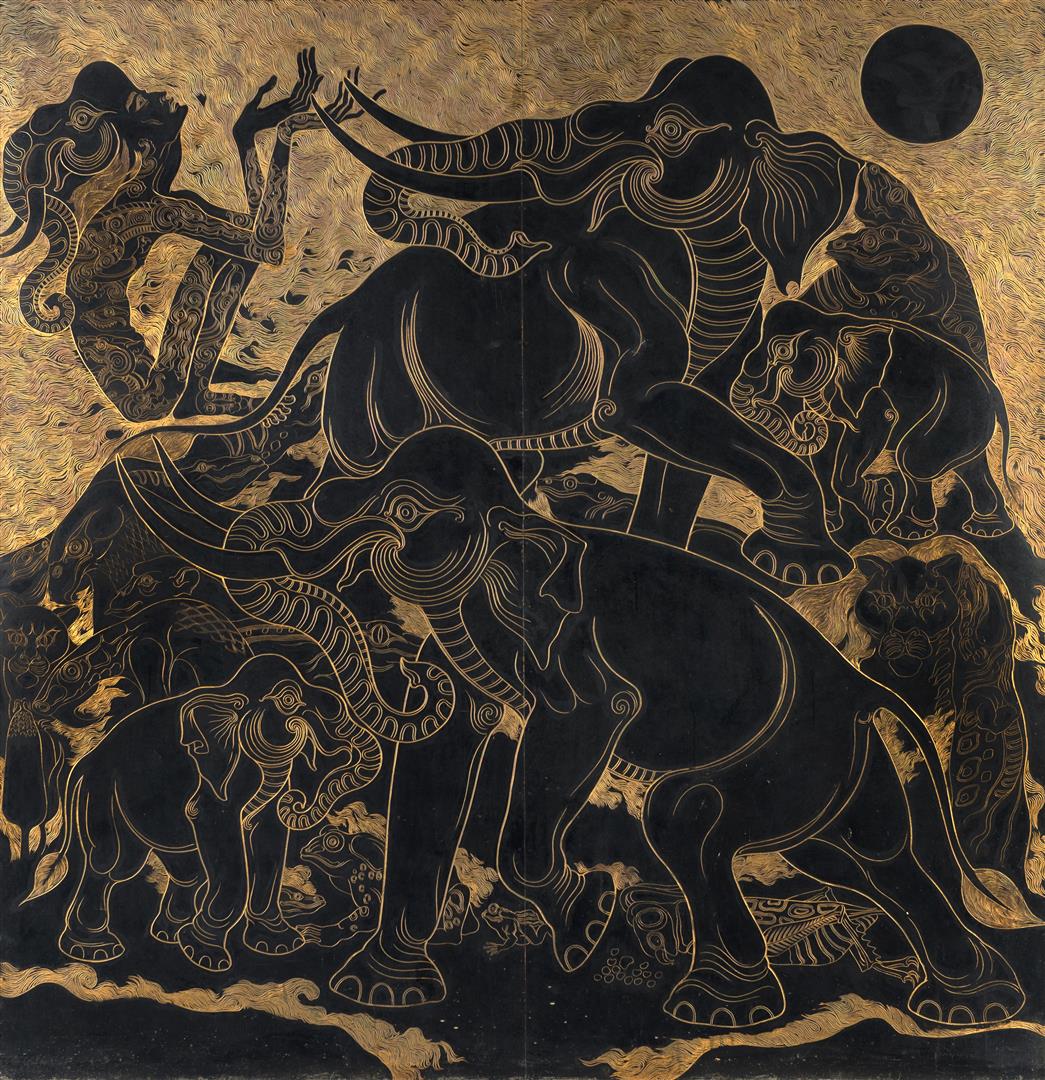
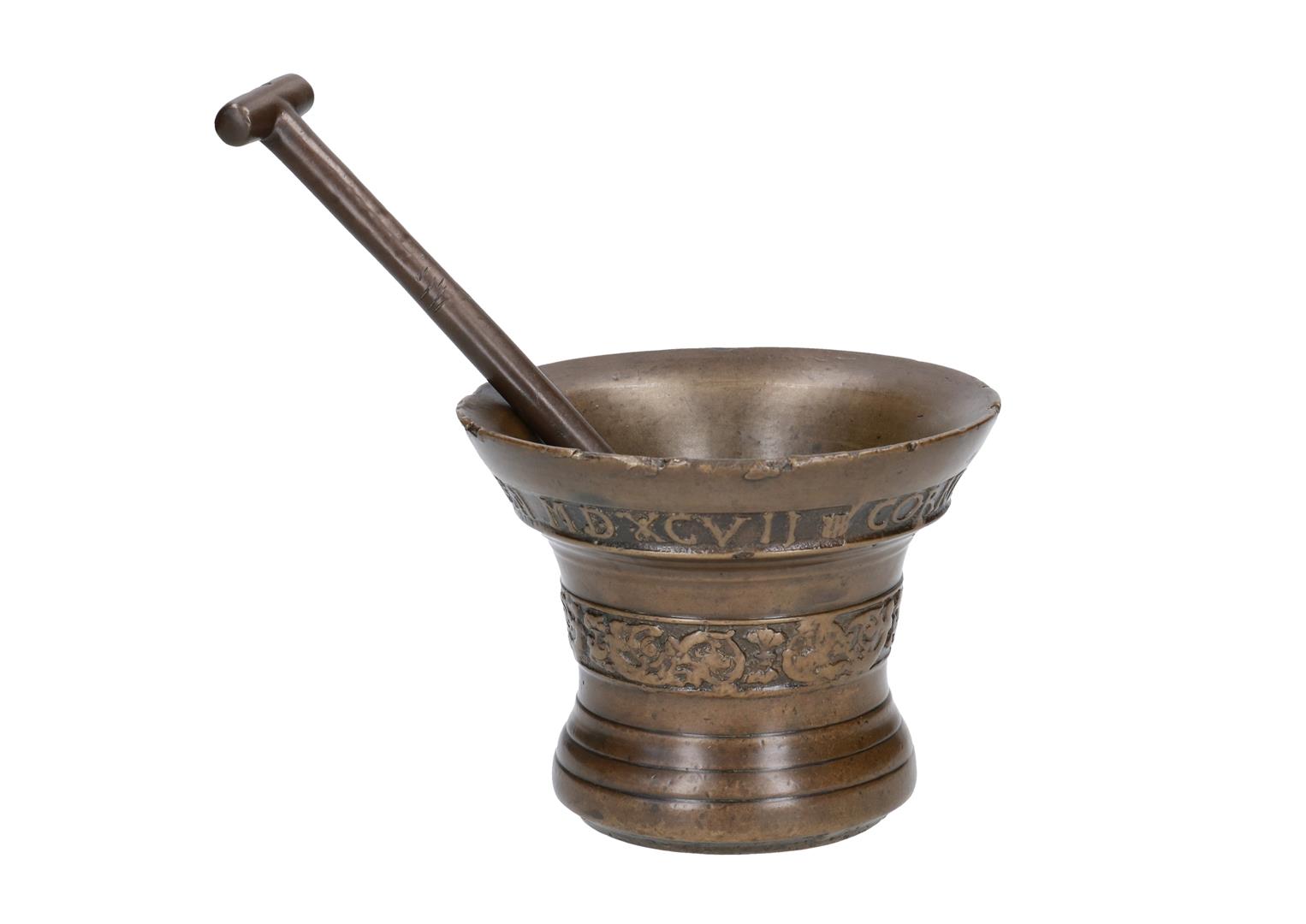
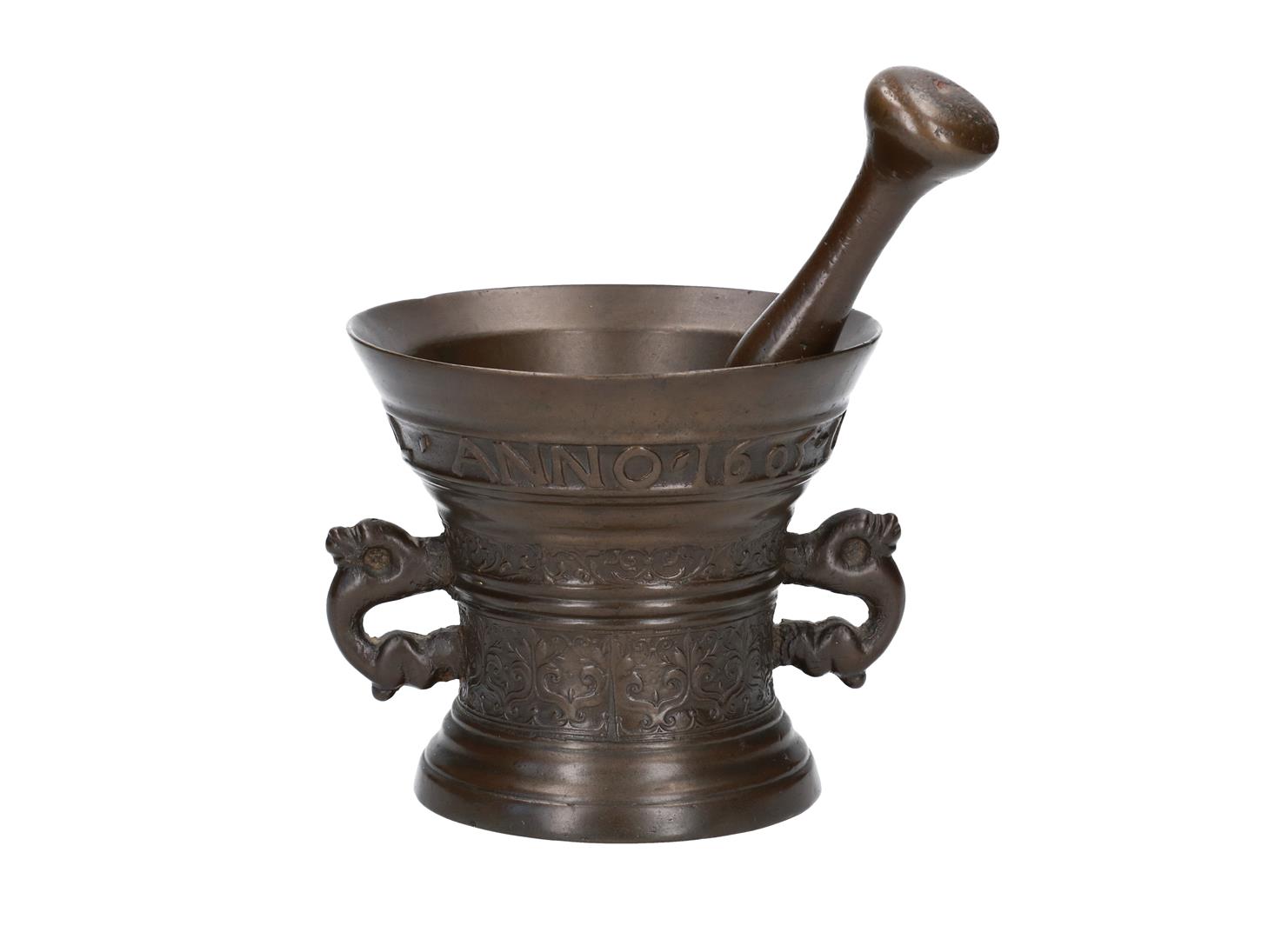

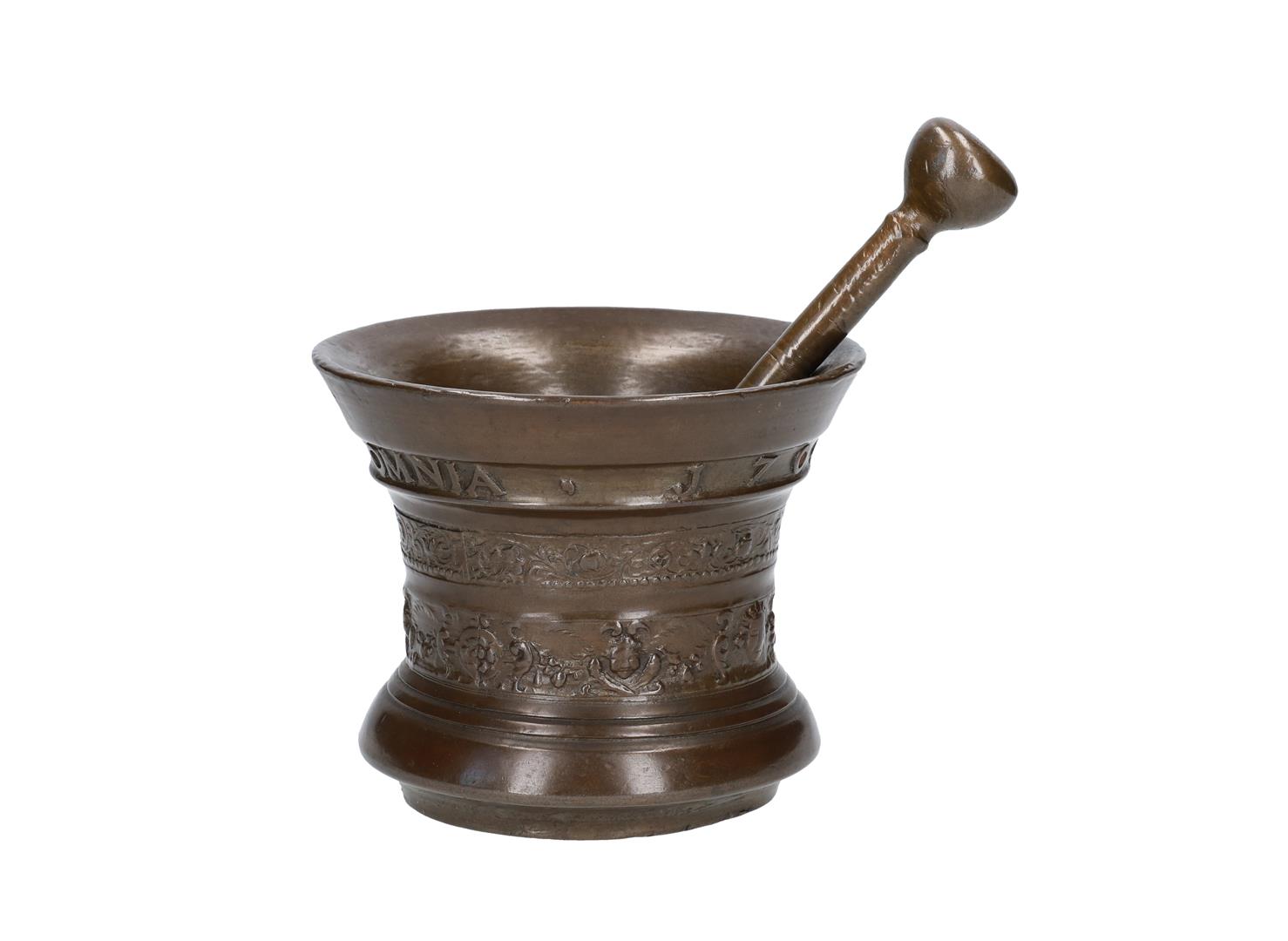

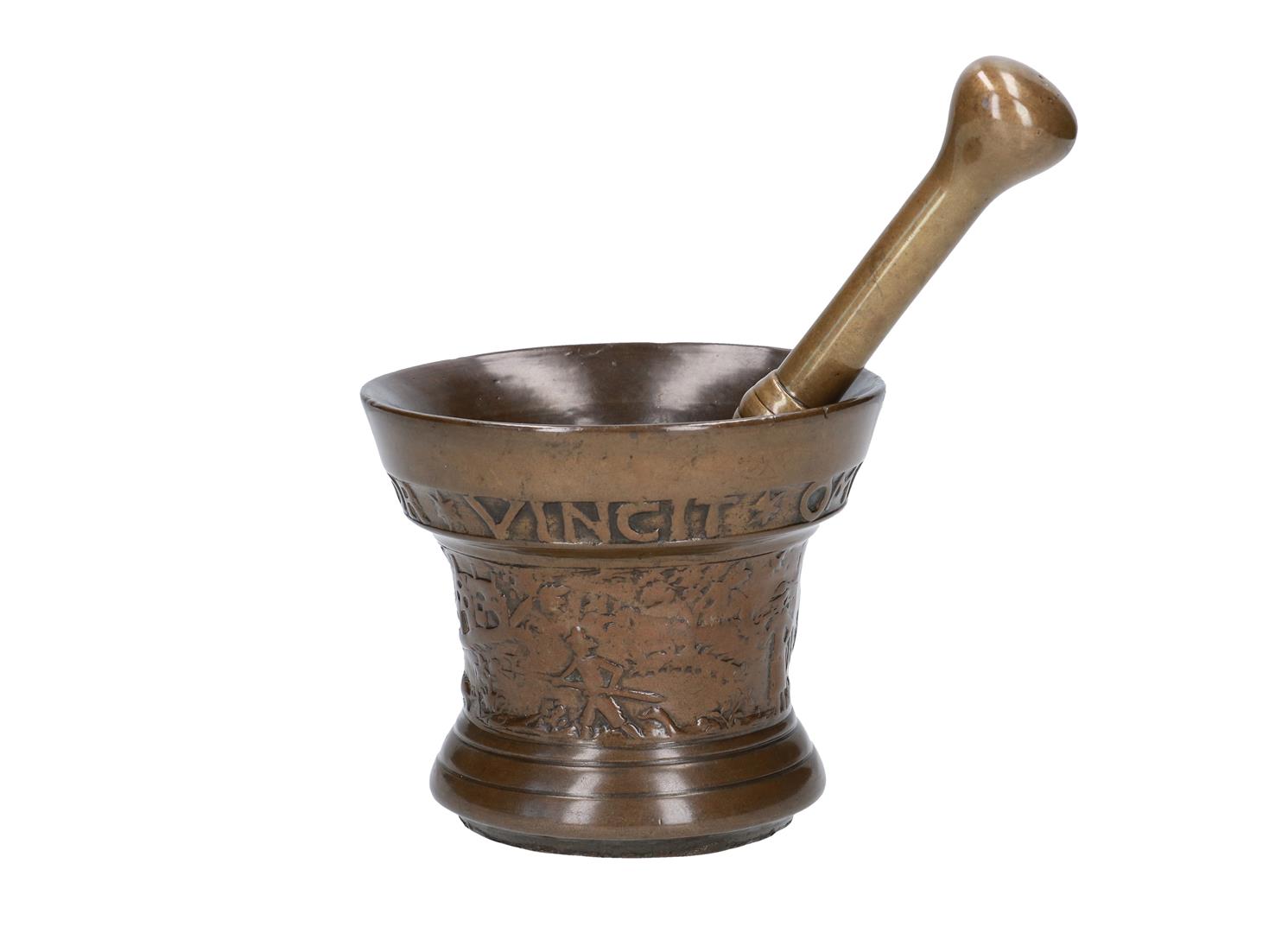
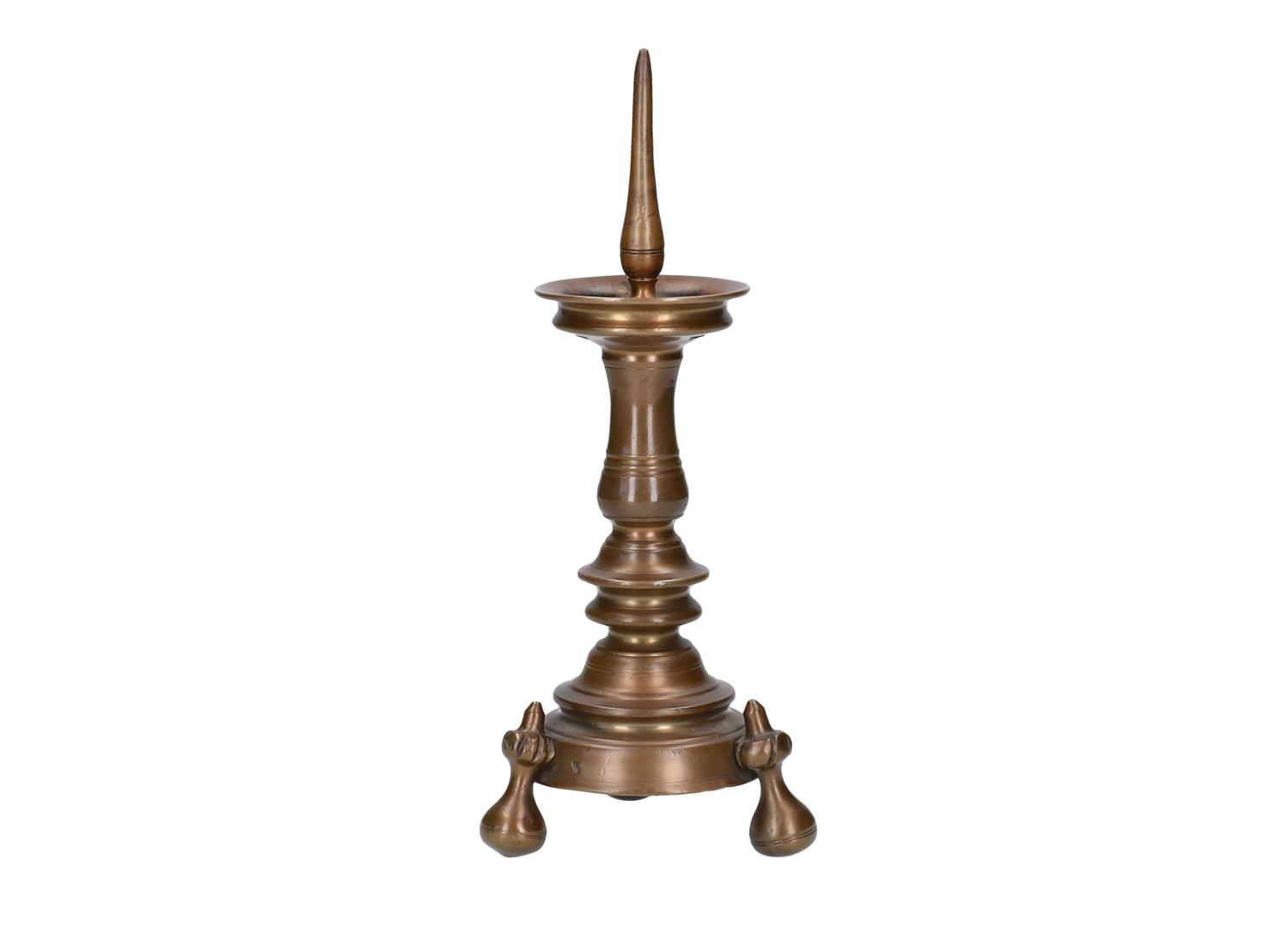
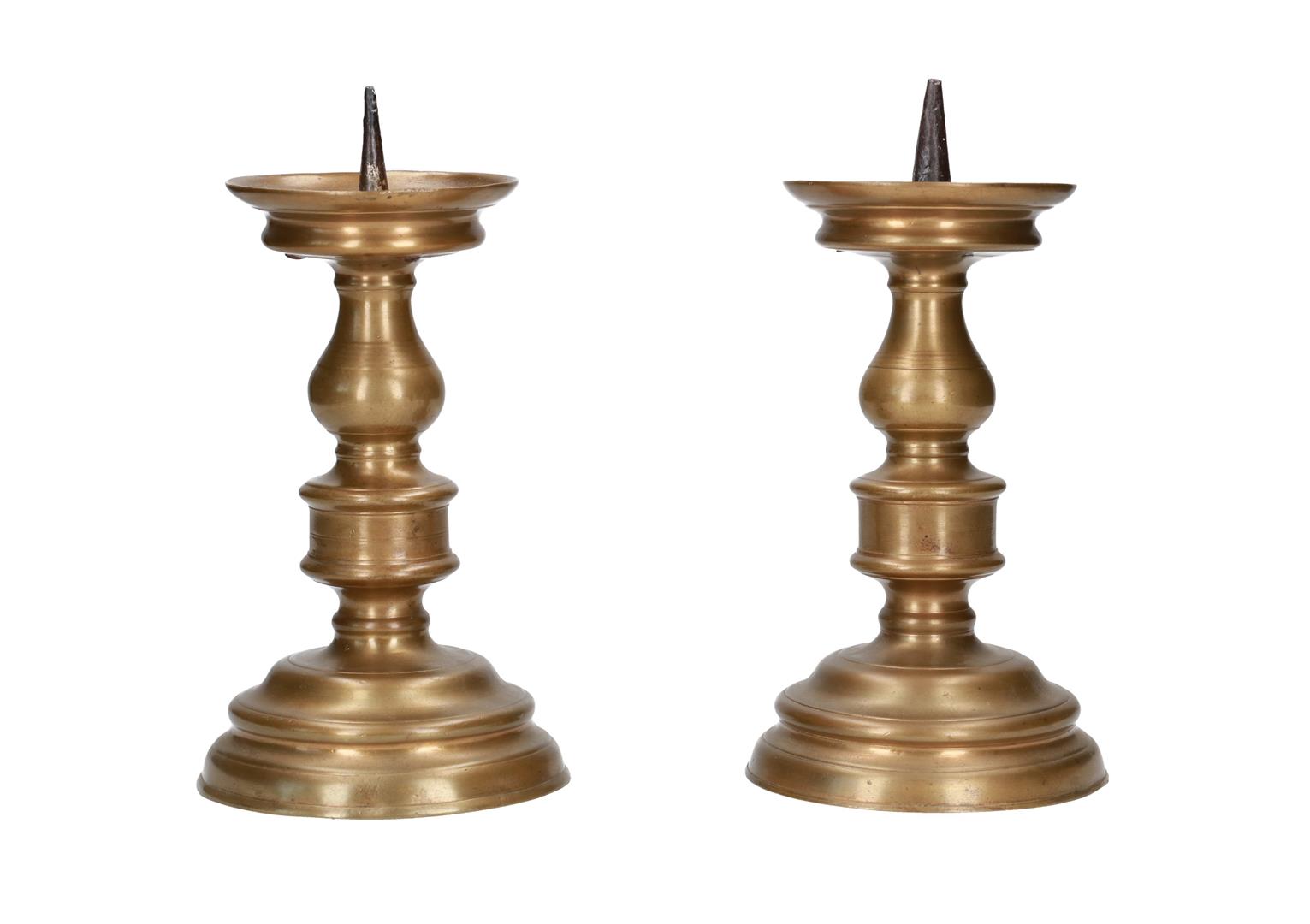
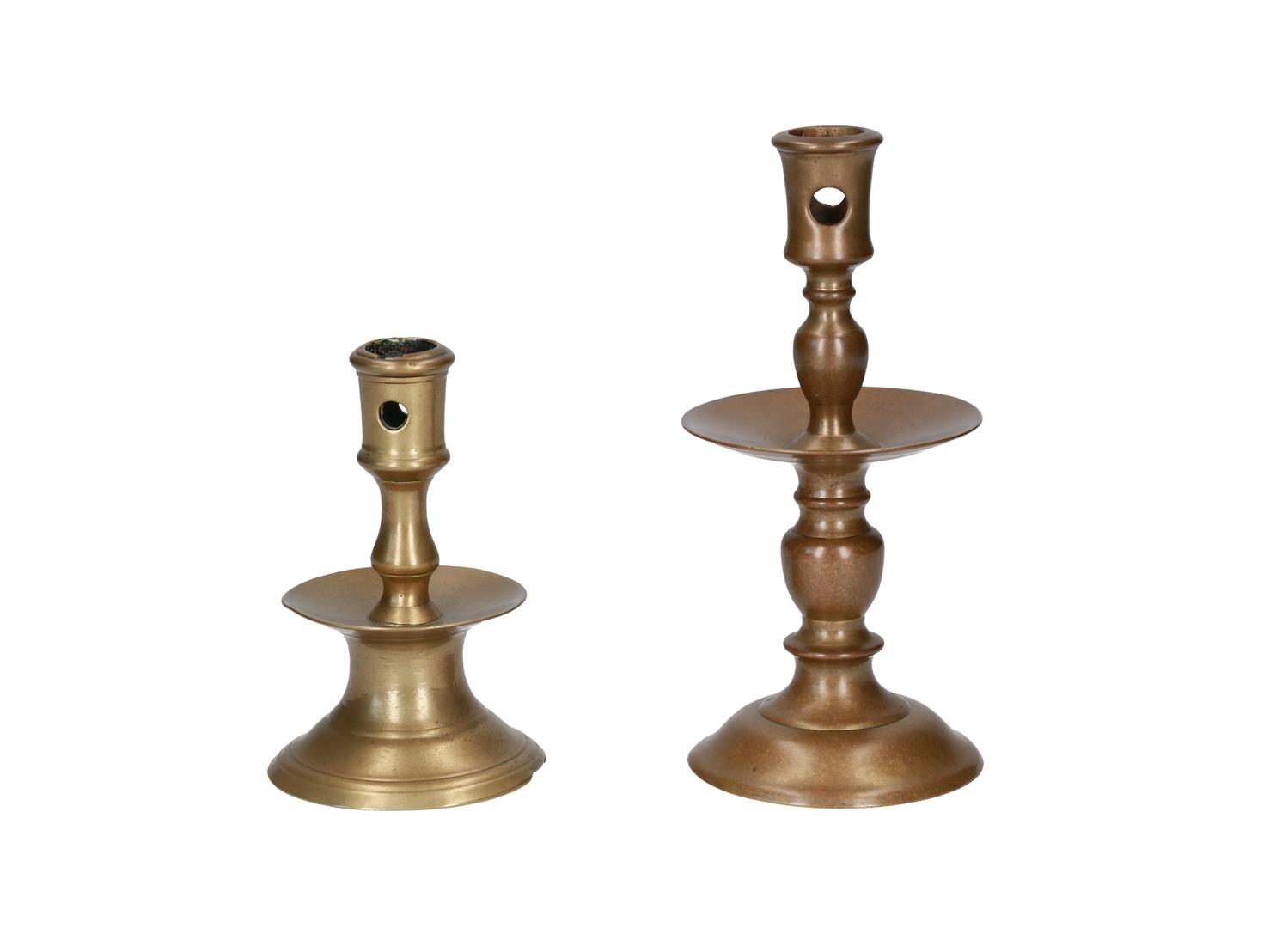


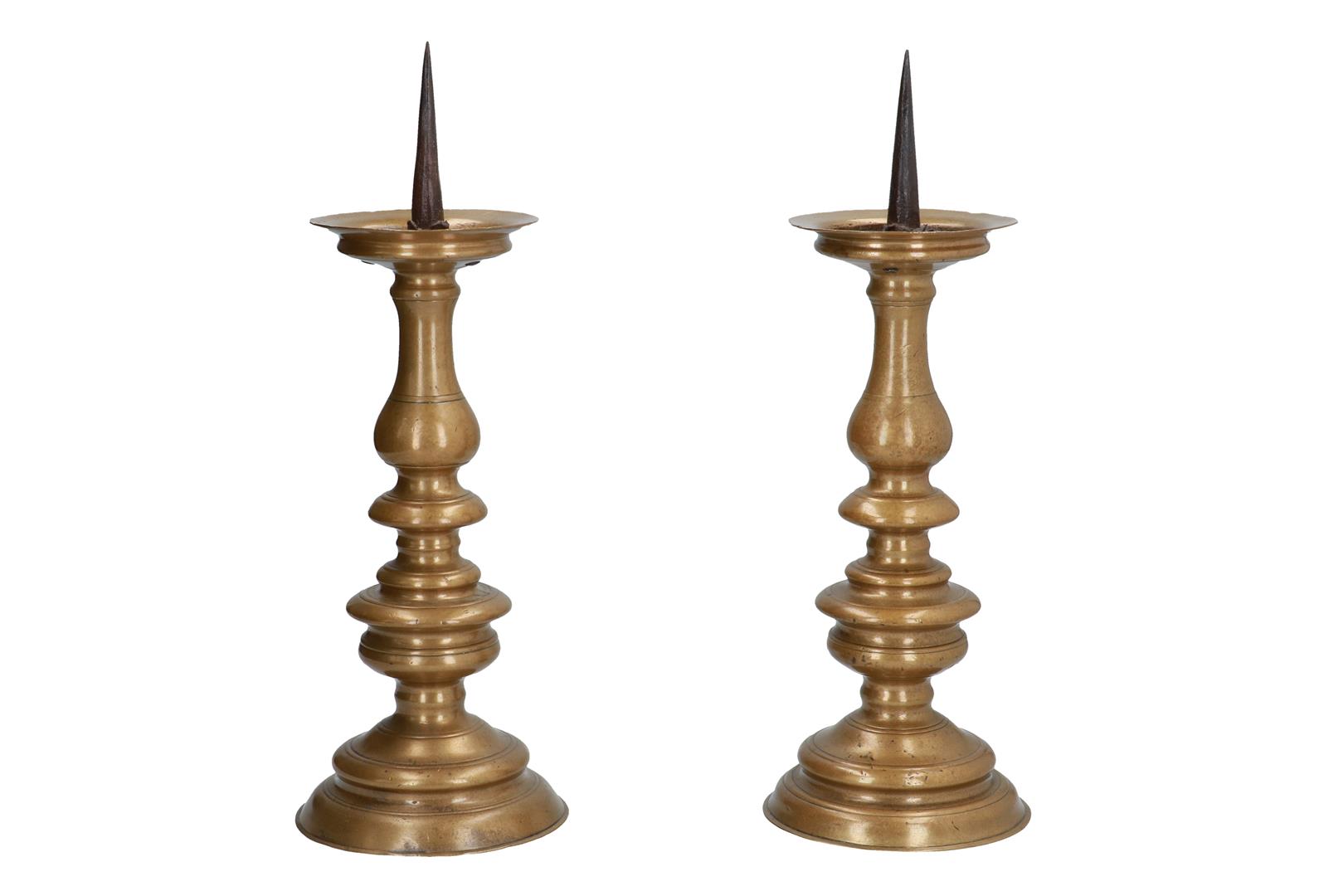
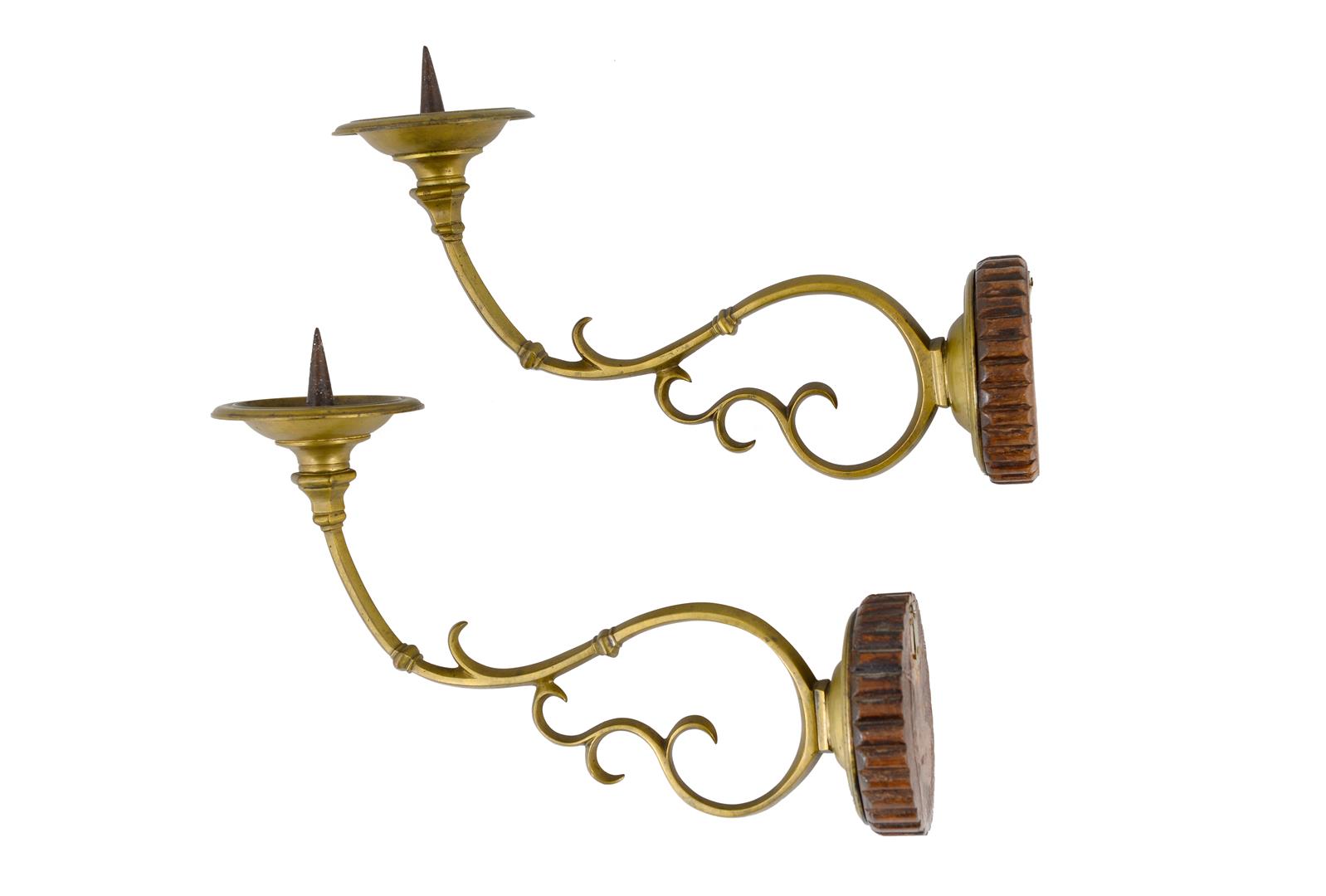
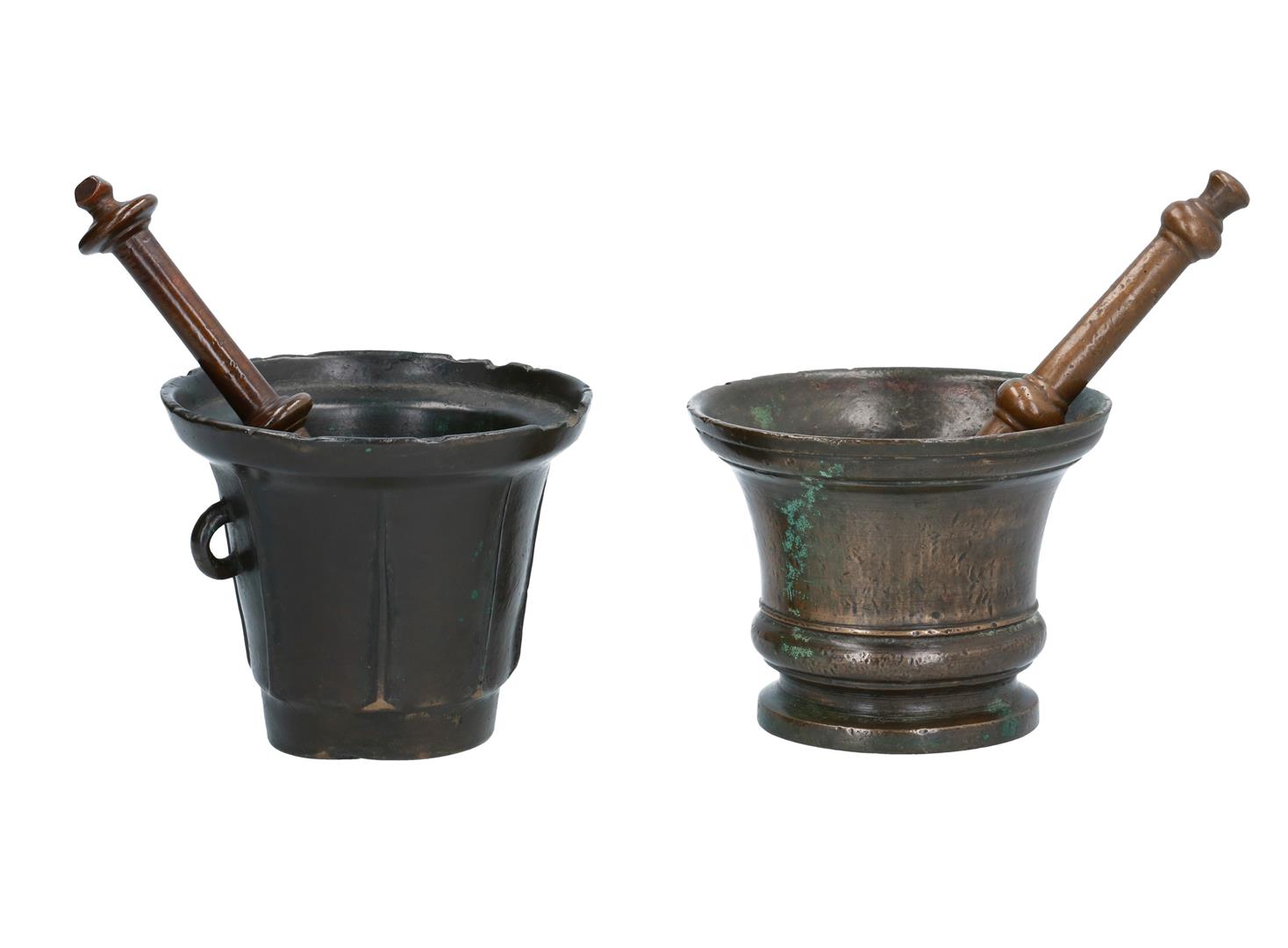
Try LotSearch and its premium features for 7 days - without any costs!
Be notified automatically about new items in upcoming auctions.
Create an alert